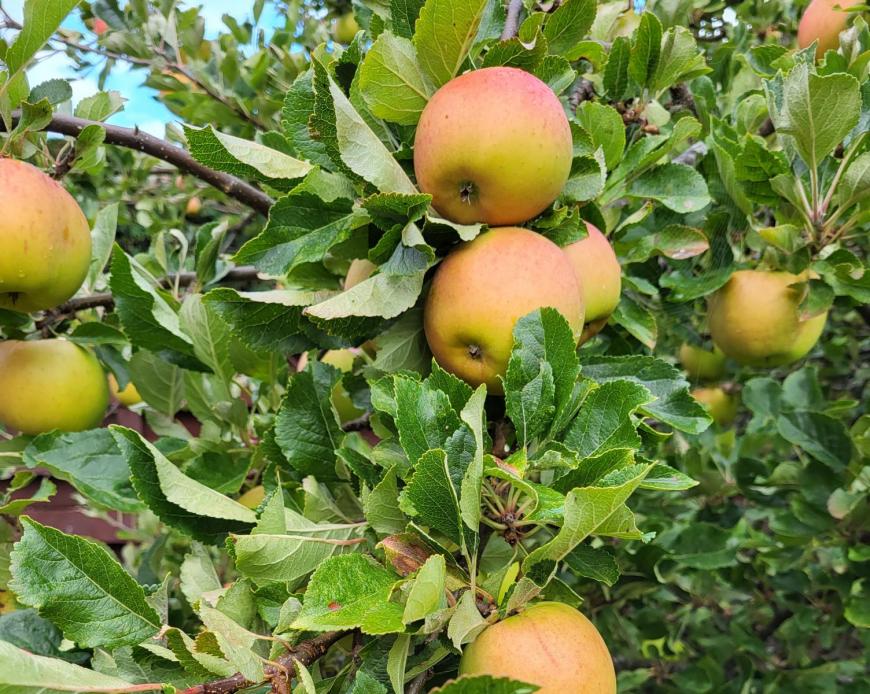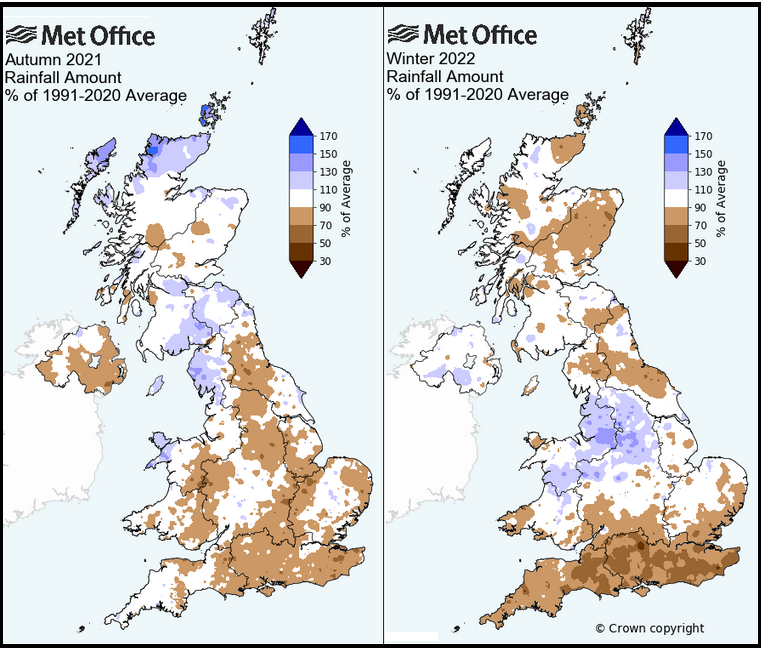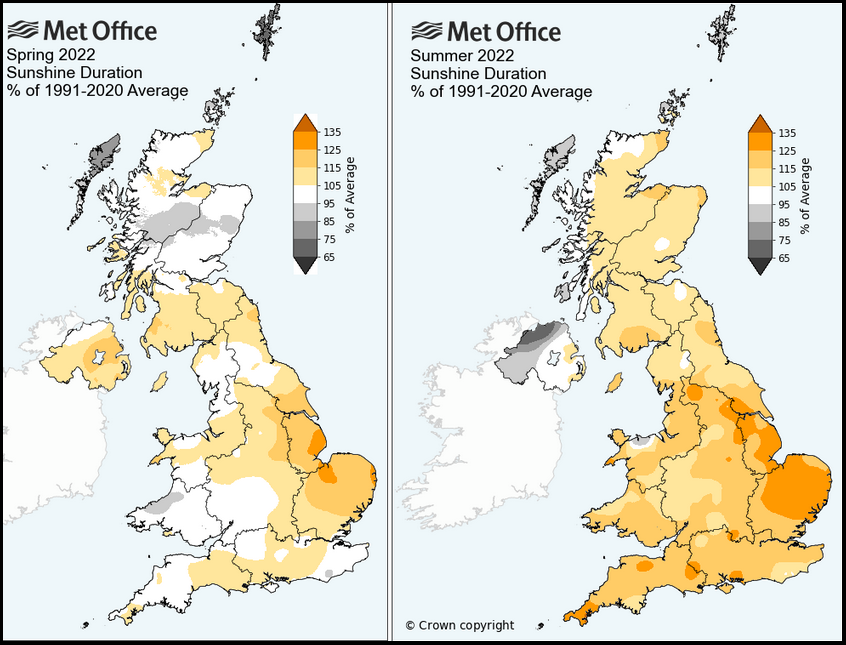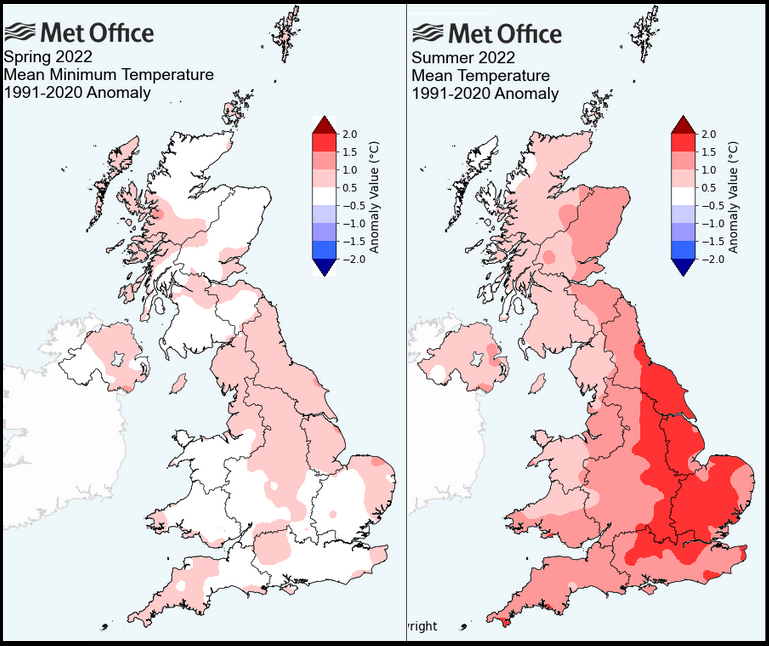
A settled, fine spring and plenty of summer sunshine and warmth has resulted in a bumper crop of tasty British apples this autumn.
This year’s weather has enabled a bountiful crop of British apples. The harvest is producing sweet, rosy apples which are very tasty. It seems they are often medium-sized but there are plenty to be had, with some glorious varieties out there.
This summer’s drought and heatwave conditions have affected vegetable growing and ornamental flowers. Heavy thundery downpours wrecked many flowers before they could be fully appreciated or shown at local rural events but the apples have been fine.

Important weather criteria are sunshine and warmth, rain at the right time, cold weather for enough time and no damaging frost, winds, hail or heavy downpours.
These all have to fit in with the vegetative cycle of the apple tree. Harsh conditions at the wrong time will have impacts but might make little difference at other times. There have to be enough cold hours each year, for each cycle. As the daylight hours decrease and the temperatures drop, the trees enter their winter rest. In spring, a new biological cycle begins and the trees come out of their dormant state. Flowering or new shoots appear and pollination is needed. Once the fruit is set, the process of growing and ripening occurs. If the temperature pattern is unusual then flowering can significantly reduce. If pollination doesn’t occur the flowers fade and fall which can happen if the number of insects and bees is low due to cool weather. If temperatures are extreme, either way, there can be damage to the new fruit crop too. The trees need some resilience.
Different varieties do well around the UK as the climate varies. Northern counties will have lower average temperatures than say SE or eastern England. Western areas would usually see higher annual rainfall. Western Britain sees less sunshine than eastern areas when the usual Atlantic flow is in place although a stagnating high pressure can alter that for weeks.

Rain - Settled spring weather can prolong the blossom season. This gives more opportunities to pollinators as long as they are present. It was warm enough and there wasn’t significant frost. There was still a lack of water in places but it seems there was enough for a good crop overall. The reduced rainfall could link to the medium-sized fruits, rather than plump full fruit, but some parts of the UK did see autumn rain which will have helped a bit. The rain (or manual watering) gives nourishment. The water leads to new growth and helps mature the ripening fruit. Weekly watering in dry or drought conditions is needed for the growing season.
Sunshine - Sunshine ripens the apples and boosts the natural sugars. Some varieties are sour or bittersweet, others taste much sweeter. There has been plenty of sunshine in 2022, this has been the main bonus. It has allowed plenty of sweetening and ripening of the fruit.
The prevailing South-westerly flow can mean that parts of the UK stay cloudy and so don’t have the hours of sunshine needed for apple trees to do well. There was a good deal of sunshine and fine weather this spring and summer. Sunny dry weather in September can assist the harvesting, it’s easier to gather early fruit. However, the heavy scattered showers will have helped and watered the late-season apples.

Temperatures - As the air begins to warm in spring the blossom appears. Cross-pollination is needed for good quality sizeable fruit. The blossom has to coincide with enough bees and insects being around. This needs warmth and plenty of bees.
The warmth of the sun, and so the air, develops the tannins and gives depth and flavour to the apples. This summer’s very hot weather enhanced the ripening of the apples.
There needs to be a colder time too, a dormant chill zone when the trees sleep and regroup otherwise, they won’t flower or fruit properly. Climate change and milder winters could affect which varieties of fruit trees will do well here. As with many things, there will have to be adaptations in the future.
The trees need enough chill time to set properly. This did happen in winter 2021/22. The ideal temperatures are below 7C but not below freezing.

The cold is needed, it is vital. Temperatures down to -10C aren’t too much of an issue for the dormant trees. However, if too mild there will be insufficient chill hours and a higher risk of fungal infections and disruption to the vegetative cycle.
In the UK the best commercial growing area is Kent with low rainfall amounts. Often, but not always, Worcestershire and Herefordshire do very well as the soil is good here too and there is plenty of sunlight and enough warmth. Flooding can be a serious problem though. Other parts of southern England do very well too and eastern Britain can see small-scale growers with decent crops, even for Tayside and Grampian. Tree roots need oxygen and it has to be present in the soil. Flooding can block that and the roots die. Soil type is important and there needs to be decent drainage. Any major stress, either too wet or too dry can impact the tree and make it an easy target for disease.
Apples that do well in the UK tend to flower quite late in springtime. This helps protect their delicate blossom from most of the frosts. Of course, the UK weather always likes to throw a spanner in the works, and late frosts can sometimes affect local crops. Winter frosts are not a particular issue. It is spring frosts in March April or even May that can really affect the crop and the severity of the late frost is important. If you have your own trees and the weather forecast has mentioned a late frost then a double layer of garden fleece could be enough. However, in spring it will need to be opened by day to allow the bees in and then re-covered late afternoon.
2012 saw a cool, wet spring and summer which lead to a poor harvest. The wrong weather conditions can result in little fruit or fruit that doesn’t ripen. Too much rain can lead to Scab and Canker. A wet autumn can be good for the following year’s harvest as it nourishes the trees and can offset any drought conditions in the next summer. Drought can produce small, non-tasty fruit. Very mild winters are no good either, the trees need to have a decent chill zone, to fall into dormancy then awaken from it.
Strong winds can wreak havoc with the blossom, especially when combined with heavy rain which will just weigh it down before it falls. High gusty winds can damage the trees and as seen in Storm Arwen in November 2021, its rare direction for gales, brought down many trees that had otherwise been sheltered.
Hail will damage many crops and can also interfere with apple blossom. Too much rain is bad for apple orchards and flooding can kill the trees. Scab and canker can take hold if damp weather continues.

When a crop is good there could be a surplus. Apples can be put in airtight cold stores for commercial selling into the next year. They are kept at 0.5C and without oxygen to prolong their availability on supermarket shelves. Trying to entice people to try other varieties is still an issue. Supermarket apples are often red to catch the eye or they just continue with the same familiar names, not even grown in the UK. Community orchards are being re-established, often with an associated cider business. These can embrace many different varieties which will flourish in different conditions and climates. And they allow people to see and appreciate other distinctive, tasty British apples.
Photos Y.Swarbrigg and J.Farrow
Loading recent activity...